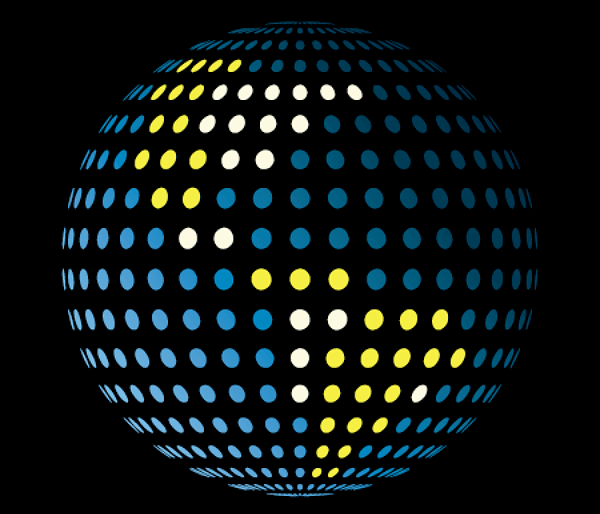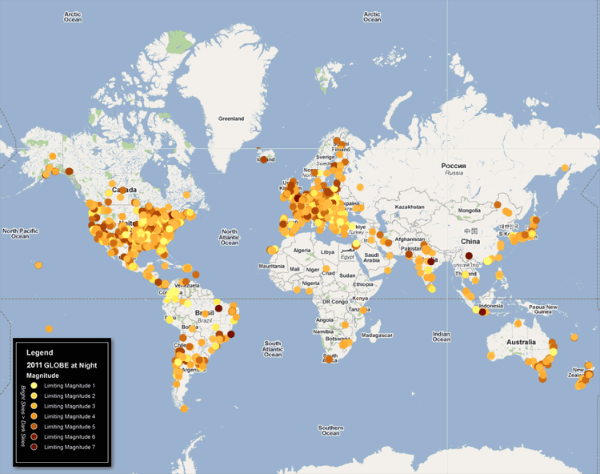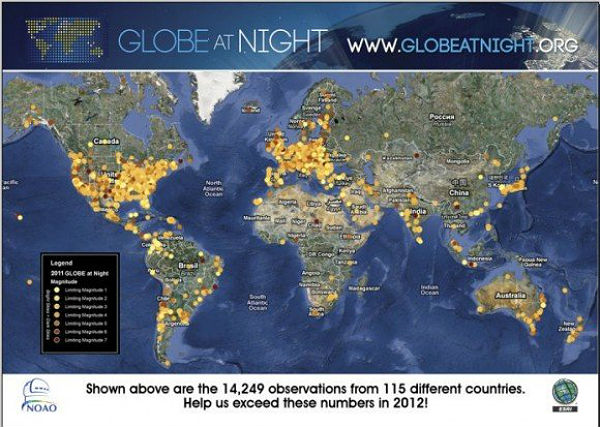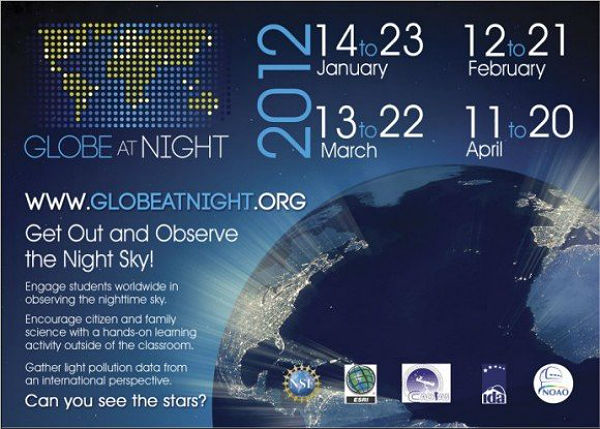Contribute: GLOBE at Night for citizen-scientist!

Light pollution not only threatens our “right to starlight”, but also affects energy consumption, wildlife and health. For the past six years, the GLOBE at Night campaign has been involving people in 115 countries. The GLOBE at Night program is an international citizen-science campaign designed to raise public awareness of the impact of light pollution on our night skies. GLOBE at Night aims to raise awareness by inviting citizen-scientists to measure their night sky brightness and submit their observations to a website from a computer or smart phone. People in 115 countries have contributed 66,000 measurements, making GLOBE at Night one of the most successful light pollution awareness campaigns. You can join too, and here is how!
Participating in GLOBE at Night requires only five easy steps:
1) Find your latitude and longitude.
2) Find Orion, Leo or Crux by going outside more than an hour after sunset (about 8-10pm local time).
3) Match your nighttime sky to one of the provided magnitude charts.
5) Compare your observation to thousands around the world.
In 2012 there will be four opportunities to participate in GLOBE at Night: January 14-23, February 12-21, March 13-22 and April 11-20.
Magnitude is a term astronomers use to describe the brightness of an object. The magnitude scale for stars was invented by the ancient Greeks, possibly by Hipparchus around 150 B.C. The Greeks grouped the stars they could see into six brightness categories. The brightest stars were called magnitude 1 stars, while the dimmest were put in the magnitude 6 group. So, in the magnitude scale, lower numbers are associated with brighter stars.
Modern astronomers, using instruments to measure stellar brightnesses, have refined the system initially devised by the Greeks. They decided that five steps in magnitude should correspond to a brightness difference by a factor of 100. A magnitude 1 star is thus 100 times brighter than a magnitude 6 star. This means that a difference of 1 in magnitude means a factor of about 2.5 times brighter. A magnitude 3 star is 2.5 times brighter than a magnitude 4 star, while a magnitude 4 star is 2.5 times brighter than a magnitude 5 star.
Exceptionally bright objects, like the Sun, and very dim objects, such as faint stars that can only be seen with telescopes, have driven astronomers to extend the magnitude scale beyond the values of 1 through 6 used by the Greeks. We now recognize magnitudes less than one (including negative numbers) and greater than six. Sirius, the brightest star in our nighttime sky, has a magnitude of -1.4. The largest modern ground-based telescopes can spot stars as dim as magnitude 25 or higher. The human eye, without the aid of a telescope, can see stars as faint as 6th or 7th magnitude.

Analysis of the 6 years of GLOBE at Night showed that on average, the people who participated in GLOBE at Night saw brighter skies and less stars over time. The analysis was done by examining separately each of the limiting magnitudes (1 through 7) over all of the campaign years. Each of the limiting magnitudes corresponds to each chart (1 through 7) used in the campaign. The brighter the sky, the lower the number. A Chart 1 measurement (or Limiting Magnitude 1) would be what you would expect from New York City. A Chart 7 measurement (or Limiting Magnitude 7) is what you would expect from a national park.
Looking at the percentage of total number of measurements taken, binning those percentages in terms of the limiting magnitude (or chart number), and then color coding by year, produces the histogram in Figure 1.
Looking only by limiting magnitude over the years, trends can be seen in all of the limiting magnitudes. For the most part, Limiting Magnitudes 1, 2 and 3 (brighter skies) slope upward (with the exception of Year 2006 for Limiting Magnitude 1). This means the skies on average were brighter for the people who submitted that GLOBE at Night data. For the most part, Limiting Magnitudes 4, 5, 6 and 7 (darker skies), slope downward. This means the skies on average were less dark for the people who submitted that GLOBE at Night data. One caveat to note is that since the same people do not necessarily participate in the campaign each year, it is hard to get data from exactly the same locations. It could be that there was a higher fraction of urban participants as time went on. However, on average over the 6 years, 85% of the measurements have come from the United States and Europe.

GLOBE at Night Results for 2011
The total number of measurements during the 2011 GLOBE at night campaign was 14,249. The largest number of countries (115) participated in this year’s event; 48 of those countries contributed nearly 99% of all measurements. The top dozen contributing countries accounted for 85% of all GLOBE at Night measurements in 2011. Nearly half of all the measurements were from the United States (49 states plus the District of Columbia). 10% of all measurements (or 1400 measurements) were from Arizona. The country with the next largest contribution of measurements was Poland (with over 1200). India came in third with over 700 measurements. The other countries in the top dozen were South Korea, Croatia, Puerto Rico, the Czech Republic, Chile, Germany, Colombia, Canada and Japan (with measurements between 300 and 450).
Every 3 out of 5 measurements of limiting magnitude gave a value of 3 or 4 mag, which is typical of measurements contributed by medium to larger sized cities. 82% of the measurements (or slightly more than every 4 out of 5 measurements) were taken in light polluted areas and less than 18% (less than every 1 out of 5 measurements) from areas where you could see the Milky Way Galaxy. (The numbers are consistent with what the International Dark-Sky Association finds for the United States.)
GLOBE at Night Kickoff: Seeing the Light



Commenting rules and guidelines
We value the thoughts and opinions of our readers and welcome healthy discussions on our website. In order to maintain a respectful and positive community, we ask that all commenters follow these rules.